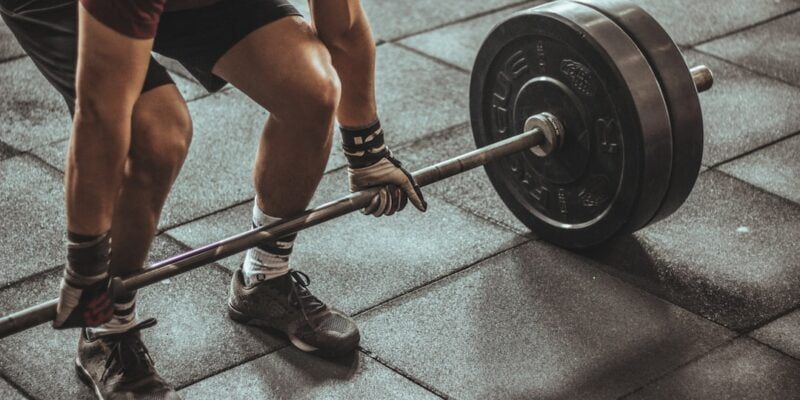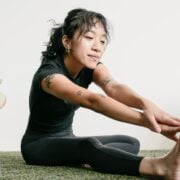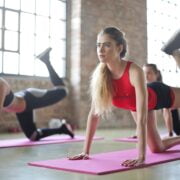
How To Do Good Mornings
Incorporating good mornings into your fitness routine can have a significant impact on your overall strength and fitness level. Good mornings are a compound exercise that primarily targets the muscles in your lower back, glutes, and hamstrings. They are a versatile exercise that can be modified to suit different fitness levels and goals. Whether you are a beginner or an experienced athlete, adding good mornings to your workout routine can help improve your posture, increase your core strength, and enhance your overall fitness.
Key Takeaways
- Good mornings are a compound exercise that targets the lower back, glutes, and hamstrings.
- Proper form and technique are crucial to avoid injury and maximize the benefits of good mornings.
- Beginners should start with bodyweight or light weights and gradually increase the load and volume.
- Increasing the intensity of good mornings can be achieved by using heavier weights, adding resistance bands, or doing variations like single-leg or Romanian good mornings.
- Good mornings can improve posture, balance, and core strength, and are a valuable addition to any full-body workout routine.
What are Good Mornings and Why are They Important?
Good mornings are a weightlifting exercise that involves bending forward at the hips while keeping your back straight and your core engaged. The movement mimics the motion of bending forward to pick up an object from the ground. Good mornings primarily target the muscles in your lower back, glutes, and hamstrings, making them an excellent exercise for strengthening these areas.
Good mornings are important for overall fitness and strength because they target multiple muscle groups simultaneously. By engaging the muscles in your lower back, glutes, and hamstrings, good mornings help improve your posture, increase your core strength, and enhance your overall stability. Additionally, good mornings can also help improve your balance and coordination, making them a valuable exercise for athletes of all levels.
Proper Form and Technique for Good Mornings
To perform good mornings with proper form and technique, follow these steps:
1. Start by standing with your feet shoulder-width apart and a barbell resting on your upper back.
2. Engage your core and keep your back straight throughout the movement.
3. Slowly bend forward at the hips while keeping your knees slightly bent.
4. Lower your torso until it is parallel to the ground or until you feel a stretch in your hamstrings.
5. Pause for a moment at the bottom of the movement, then slowly return to the starting position by pushing through your heels and engaging your glutes and hamstrings.
6. Repeat for the desired number of repetitions.
It is crucial to maintain proper form and technique when performing good mornings to avoid injury. Keep your back straight throughout the movement and avoid rounding your shoulders or arching your back. Additionally, make sure to engage your core and keep your knees slightly bent to protect your lower back. If you are new to good mornings, it is recommended to start with lighter weights and gradually increase the intensity as you become more comfortable with the exercise.
Tips for Beginners: How to Start Doing Good Mornings
If you are a beginner looking to start incorporating good mornings into your workout routine, here are some tips to help you get started:
1. Start with bodyweight or lighter weights: Begin by practicing the movement without any weights or with a light barbell. This will allow you to focus on maintaining proper form and technique before adding additional weight.
2. Focus on flexibility: Good mornings require a good range of motion in your hips and hamstrings. Prioritize stretching and mobility exercises for these areas to improve your flexibility and prevent injury.
3. Gradually increase intensity: As you become more comfortable with the movement, gradually increase the weight you are using. Start by adding small increments of weight and listen to your body’s response. If you experience any pain or discomfort, reduce the weight or take a break.
Remember, it is essential to listen to your body and progress at a pace that feels comfortable for you. Don’t be discouraged if you can’t lift heavy weights right away – building strength takes time and consistency.
How to Increase the Intensity of Your Good Morning Workouts
Once you have mastered the basic form and technique of good mornings, you can start increasing the intensity of your workouts. Here are some tips to help you challenge yourself and see progress:
1. Increase the weight: Gradually increase the weight you are using for good mornings. This will help build strength and muscle mass in your lower back, glutes, and hamstrings. However, make sure to maintain proper form and technique as you increase the weight to avoid injury.
2. Add resistance bands: Incorporating resistance bands into your good morning workouts can add an extra challenge. Attach a resistance band to a stable object and loop it around your hips or shoulders while performing the exercise. The resistance from the band will make the movement more challenging and engage your muscles even further.
3. Perform variations: There are several variations of good mornings that can help increase the intensity of your workouts. Try performing single-leg good mornings or Romanian deadlifts to target specific muscle groups and challenge your balance and stability.
Remember to always listen to your body and progress at a pace that feels comfortable for you. Pushing yourself too hard or too quickly can lead to injury, so it’s important to find the right balance between challenging yourself and staying safe.
The Benefits of Adding Good Mornings to Your Fitness Routine
Adding good mornings to your fitness routine can provide numerous benefits for your overall strength and fitness level. Here are some of the key benefits:
1. Improved posture: Good mornings target the muscles in your lower back, which play a crucial role in maintaining proper posture. By strengthening these muscles, good mornings can help improve your posture and reduce the risk of developing back pain or injuries.
2. Increased core strength: Good mornings require you to engage your core throughout the movement, which helps strengthen your abdominal muscles and improve overall core stability. A strong core is essential for maintaining proper form in other exercises and activities.
3. Enhanced lower body strength: Good mornings primarily target the muscles in your lower back, glutes, and hamstrings. By regularly performing this exercise, you can strengthen these muscle groups, leading to increased lower body strength and power.
4. Improved balance and coordination: Good mornings require you to maintain balance and coordination throughout the movement. By practicing this exercise regularly, you can improve your balance and coordination, which can benefit you in various sports and activities.
5. Increased calorie burn: Good mornings are a compound exercise that engages multiple muscle groups simultaneously. This means that they can help increase your calorie burn during your workouts, making them an effective exercise for weight loss or maintenance.
Common Mistakes to Avoid When Doing Good Mornings
While good mornings can be a highly beneficial exercise, there are some common mistakes that people often make when performing them. Here are some mistakes to avoid:
1. Rounding the back: One of the most common mistakes is rounding the back during the movement. This can put excessive strain on your lower back and increase the risk of injury. Focus on keeping your back straight throughout the exercise and engage your core to maintain proper form.
2. Arching the back: Arching the back is another common mistake that can lead to injury. Avoid hyperextending your lower back and focus on maintaining a neutral spine position throughout the movement.
3. Using too much weight: It’s important to start with lighter weights and gradually increase the intensity as you become more comfortable with the exercise. Using too much weight too soon can compromise your form and increase the risk of injury.
4. Neglecting warm-up and cool-down: Before performing good mornings or any other exercise, it’s essential to warm up your muscles and prepare them for the workout. Similarly, cooling down after your workout can help prevent muscle soreness and promote recovery.
By avoiding these common mistakes, you can ensure that you are getting the most out of your good morning workouts while minimizing the risk of injury.
How to Incorporate Good Mornings into Your Full-Body Workout
Good mornings can be incorporated into a full-body workout routine to target multiple muscle groups and maximize your results. Here are some tips for incorporating good mornings into your workout:
1. Pair with other lower body exercises: Good mornings can be paired with other lower body exercises such as squats, lunges, or deadlifts to create a comprehensive lower body workout. Perform a set of good mornings followed by a set of another lower body exercise, and repeat for the desired number of sets and repetitions.
2. Include in a circuit workout: If you prefer circuit-style workouts, you can include good mornings as one of the exercises in your circuit. Perform a set of good mornings, followed by a set of another exercise, and continue through the circuit until all exercises are completed.
3. Alternate upper and lower body exercises: Another option is to alternate between upper and lower body exercises during your workout. Perform a set of good mornings, followed by a set of an upper body exercise such as push-ups or rows. This allows you to give your muscles a break while still maintaining an effective workout.
Remember to listen to your body and adjust the intensity and volume of your workouts based on your fitness level and goals. It’s important to find a balance between challenging yourself and allowing for proper recovery.
The Role of Good Mornings in Strengthening Your Lower Back and Core
Good mornings are an excellent exercise for strengthening your lower back and core muscles. Here’s how they target these areas:
1. Lower back: Good mornings primarily target the muscles in your lower back, including the erector spinae muscles. These muscles play a crucial role in maintaining proper posture and spinal stability. By regularly performing good mornings, you can strengthen these muscles, reducing the risk of back pain or injuries.
2. Core: Good mornings require you to engage your core throughout the movement to maintain proper form and stability. This engagement helps strengthen your abdominal muscles, including the rectus abdominis, transverse abdominis, and obliques. A strong core is essential for overall stability and can help improve your performance in other exercises and activities.
By incorporating good mornings into your fitness routine, you can target and strengthen these important muscle groups, leading to improved overall strength and stability.
How to Modify Good Mornings for Different Fitness Levels and Goals
Good mornings can be modified to suit different fitness levels and goals. Here are some modifications you can make:
1. Bodyweight good mornings: If you are a beginner or recovering from an injury, you can start with bodyweight good mornings. This allows you to focus on mastering the movement and maintaining proper form before adding additional weight.
2. Dumbbell or kettlebell good mornings: Once you are comfortable with bodyweight good mornings, you can progress to using dumbbells or kettlebells. Hold the weights in your hands while performing the exercise to add resistance and increase the intensity.
3. Barbell good mornings: Barbell good mornings are the most common variation of this exercise. Start with a light barbell and gradually increase the weight as you become more comfortable with the movement.
4. Single-leg good mornings: To challenge your balance and stability, you can perform single-leg good mornings. Lift one leg off the ground while bending forward at the hips, then return to the starting position. This variation targets your glutes, hamstrings, and core muscles even more.
Remember to choose modifications that align with your current fitness level and goals. It’s important to challenge yourself, but also listen to your body and progress at a pace that feels comfortable for you.
The Science Behind Good Mornings: How They Improve Your Posture and Balance
The science behind good mornings lies in the muscles they target and how they improve posture and balance. Here’s a breakdown of the science:
1. Muscles involved: Good mornings primarily target the muscles in your lower back, glutes, and hamstrings. The erector spinae muscles in your lower back help maintain proper posture and spinal stability. The glutes and hamstrings are responsible for hip extension and play a crucial role in overall lower body strength and power.
2. Posture improvement: Good mornings strengthen the muscles in your lower back, which helps improve your posture. By strengthening these muscles, you can maintain a more upright position, reducing the risk of slouching or rounding your shoulders.
3. Balance improvement: Good mornings require you to maintain balance and stability throughout the movement. This engages the muscles in your core, including the rectus abdominis, transverse abdominis, and obliques. By strengthening these muscles, you can improve your balance and stability, reducing the risk of falls or injuries.
The science behind good mornings highlights their effectiveness in targeting specific muscle groups and improving overall posture and balance.
Incorporating good mornings into your fitness routine can have a significant impact on your overall strength, posture, and balance. By targeting the muscles in your lower back, glutes, and hamstrings, good mornings help improve your posture, increase your core strength, and enhance your overall stability. Whether you are a beginner or an experienced athlete, adding good mornings to your workout routine can help you achieve your fitness goals and improve your overall fitness level.
Remember to always prioritize proper form and technique when performing good mornings to avoid injury. Start with lighter weights or bodyweight variations if you are a beginner and gradually increase the intensity as you become more comfortable with the exercise. Additionally, listen to your body and adjust the intensity and volume of your workouts based on your fitness level and goals.
So why not give good mornings a try? Incorporate them into your fitness routine and experience the benefits for yourself. Strengthen your lower back, improve your posture, and enhance your overall fitness with this versatile exercise.
If you’re looking to enhance your morning routine and start your day on a positive note, you might find this article on Wave Magnets quite interesting. They offer a range of innovative products designed to promote wellness and positivity. One of their featured articles, “The Power of Morning Rituals: How to Create a Meaningful Start to Your Day,” provides valuable insights and practical tips on how to establish a morning routine that sets the tone for success. Check it out here for some inspiration on how to make the most out of your mornings.
FAQs
What are good mornings?
Good mornings are a weightlifting exercise that targets the lower back, glutes, and hamstrings.
What equipment do I need to do good mornings?
To do good mornings, you will need a barbell and weights. You may also want to use a squat rack or power rack for safety.
How do I perform good mornings?
To perform good mornings, start by placing a barbell across your shoulders behind your neck. Stand with your feet shoulder-width apart and your knees slightly bent. Keeping your back straight, hinge forward at the hips until your torso is parallel to the ground. Return to the starting position by squeezing your glutes and pushing your hips forward.
What are the benefits of doing good mornings?
Good mornings can help strengthen your lower back, glutes, and hamstrings. They can also improve your posture and help prevent lower back pain.
Are there any risks associated with doing good mornings?
Like any weightlifting exercise, there is a risk of injury if good mornings are not performed correctly. It is important to use proper form and start with a light weight until you are comfortable with the movement. If you have any pre-existing lower back or hip injuries, you should consult with a doctor before attempting good mornings.


















